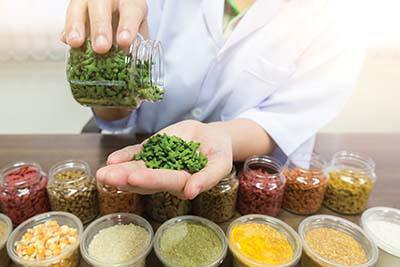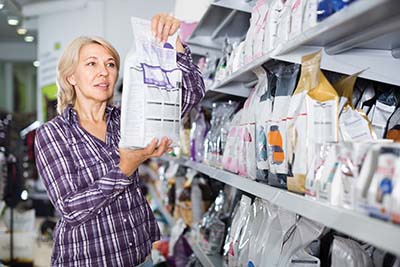This article was published in the December 2022 issue of Pet Food Processing. Read it and other articles from this issue in our December digital edition.
The US pet food industry is accelerating at an impressive rate, with innovation providing safe, high-quality and improved nutritional products for over 135 million dogs and cats in America and even more around the world. This innovation is occurring to meet consumer demand, address supply chain challenges, and help manufacturers make progress on their sustainability goals. Sometimes, the regulatory system gets blamed for slowing down that innovation. While not always moving at the same pace, there is a flurry of activity currently happening in the regulatory space that will make the ingredient review processes in the United States work smarter, faster and more efficiently so it does not slow down your business.
Most people in the pet food industry recognize that the process of getting new animal food ingredients reviewed by the US Food and Drug Administration’s (FDA) Center for Veterinary Medicine (CVM) and the Association of American Feed Control Officials (AAFCO) can be slow and confusing. Under federal law, any substance added to or expected to become a component of animal food, either directly or indirectly, must be an approved food additive (published in the Code of Federal Regulations) unless it is Generally Recognized as Safe (GRAS) for that intended use.
“Without this policy change, our country will continue to lag behind most of the world, including the European Union, Canada, Brazil, Australia and others, in approving safe, effective feed ingredients with animal production, environmental and other benefits,” wrote Leah Wilkinson of AFIA.
AAFCO plays a role in animal food ingredient reviews through its process of establishing ingredient definitions, which are then published annually in the AAFCO Official Publication. Though they are not approved food additives under federal law, the FDA has a long history of accepting these AAFCO-defined ingredients for use in the country, provided there are no safety concerns. To ensure there are no safety concerns, the CVM acts as the reviewer to determine that any new AAFCO-defined ingredient is safe for its intended use under a Memorandum of Understanding.
The American Feed Industry Association (AFIA) has focused its policy activities in the last several years on improving the efficiency and effectiveness of the ingredient review processes at the FDA and AAFCO. In recent years, it has become quicker and more affordable to get ingredients approved in other countries than here at home, and that is no longer acceptable. The AFIA has been working hard to fix several issues to, hopefully, get our system back on track.
Boosting FDA’s resources
Part of the slowness of ingredient reviews stems from a lack of focus and resources at the CVM for animal food ingredient reviews. Over the last 15 years, resources tightened within the agency, making it difficult to hire or fill vacancies when staff moved to new positions or retired. Also during this time, the CVM staff were pulled away for competing higher-priority issues (such as writing and implementing the Food Safety Modernization Act regulations). This tightening of resources combined with the fact that the CVM has taken broad, and sometimes excessive, interpretations of its policies has led to significant delays in approvals for new animal food ingredients.
 The pet food industry cannot provide new pet food and treats with innovative ingredients without efficient ingredient review systems in place. (Source: ©SATAWAT – STOCK.ADOBE.COM)
The pet food industry cannot provide new pet food and treats with innovative ingredients without efficient ingredient review systems in place. (Source: ©SATAWAT – STOCK.ADOBE.COM)
The AFIA has sought to address these issues with the FDA and Congress, and in the last three years, a total of $6 million in new funding has been appropriated to the CVM as a result of these advocacy efforts. This money has allowed the agency to hire 12 full-time staff to fill vacancies and provide expertise in new scientific areas, like microbiology and biotechnology, to fill knowledge gaps in the division. These individuals have been on board for two years, and the industry is starting to see a faster turnaround speed for food additive petitions and AAFCO definitions, which is much appreciated.
Congress directed the CVM to streamline the agency’s requirements for its food additive regulations related to manufacturing requirements and the use of foreign data, which resulted in Guidance for Industry #262. Congress also removed the requirement in the Food and Drug Administration Amendments Act of 2007 (FDAAA) for the CVM to establish standards for ingredient use in animal food. This allowed for continued participation and recognition of the ingredients published in AAFCO’s Official Publication.
The CVM also went through a reorganization this past summer, which separated the pre-approval areas of work (i.e., animal food ingredient reviews) and compliance efforts. This means that staff within the newly named Division of Animal Food Ingredients can concentrate on their responsibilities for reviewing new animal food ingredients and not get called into other efforts within the agency.
Harmonizing international data requirements, approvals
Another effort is the collaboration with the International Cooperation for Convergence of Technology Requirements for the Assessment of Feed Ingredients (ICCF). The ICCF was launched in 2017 by feed regulators and feed industry associations in the United States, Canada and European Union and in conjunction with the International Feed Industry Federation. We work collaboratively to develop and establish common guidance that covers the technical requirements in the studies and data needed to review new ingredients. The aim is to facilitate the approval of animal food ingredients across these jurisdictions by establishing an agreement of what is needed in a study so a company can conduct one study that will be accepted in each jurisdiction, instead of having to do three different studies meeting different sets of requirements for each jurisdiction.
 New pet food product innovation will suffer if ingredient review systems aren’t improved and streamlined. (Source: ©CAFTOR – STOCK.ADOBE.COM)
New pet food product innovation will suffer if ingredient review systems aren’t improved and streamlined. (Source: ©CAFTOR – STOCK.ADOBE.COM)
The ICCF asks each of its members to contribute to expert working groups, which draft the guidance documents on particular topics. An initial draft is posted for public consultation so that all interested stakeholders are able to provide feedback and ensure clarity of the material. The expert working groups consider the comments received and modify the guidance documents, if appropriate, before final publication.
To date, the ICCF has finalized and published five guidance documents covering the topics of:
- Stability Testing of Feed Ingredients (published March 2019)
- Sub-Chronic Oral Toxicity Testing in Laboratory Animals (published March 2019)
- Homogeneity Testing of Feed Ingredients (published September 2020)
- Manufacturing Process and Specification (published July 2021)
- Genotoxicity Testing (published April 2021)
Work is almost complete on the topics of identification and characterization of feed ingredients and environmental safety assessment approach. The ultimate goal is to achieve harmonization of the data requirements, which leads to congruent or simultaneous approvals across many jurisdictions, therefore speeding up time to market for products and improving global competitiveness.
Updating FDA’s policy on label claims
Since 1998, the CVM has used a narrow definition of what is considered a “food” and what is a “drug” when reviewing new animal food products. Currently, any animal food ingredient that aims to provide anything other than taste, nutrition or aroma is classified as a drug and needs to proceed through that regulatory review process. In September 2020, the AFIA asked the CVM to modernize the policy interpretation to allow products that work within the gastrointestinal tract or on the digesta and are seeking label claims for animal production, animal wellbeing, food safety and the environment, to be regulated as “feeds” instead of “drugs.” This policy change is equally important for the pet food industry as it is for the livestock feed industry.
This is a top priority for the AFIA, and the staff recently shared this position during a listening session held by the CVM on Oct. 18 and subsequently in written comments submitted in November. AFIA’s legal opinion is that such a change can be implemented without amending the Federal Food Drug and Cosmetic Act or FDA regulations and these products can be reviewed through the existing review pathways — food additive petition, GRAS and AAFCO.
Without this policy change, our country will continue to lag behind most of the world, including the European Union, Canada, Brazil, Australia and others, in approving safe, effective feed ingredients with animal production, environmental and other benefits. This delay is not only preventing farmers and pet owners from accessing these technologies but is limiting the United States in making progress on its climate and food security goals.
“By working together to solve the challenges with the ingredient review systems, we can all help the United States win back the leading spot in innovation in the animal food industry,” wrote Leah Wilkinson, AFIA.
The industry is not alone in this request. Over 1,000 people registered for the listening session, and 18 of the 20 speakers agreed for the need for the agency to modernize its policy. Secretary of Agriculture Tom Vilsack has spoken many times about the role feed ingredients can play in reducing greenhouse gas emissions and has urged the FDA to modernize its approach. Even Congress, in its fiscal 2022 appropriations bill, directed the CVM to study this old policy on animal food claims and make this change.
By modifying its policy, the agency will strengthen its mandate of ensuring public health by giving these products a regulatory review pathway for safety to the animal, human food safety and efficacy that will be utilized by our industry. This policy change has the potential to remove some of the industry’s challenges in completing submission packages and which the CVM staff face while trying to review these ingredients under the guise of a food providing taste, nutrition or aroma.
The AFIA anticipates that the CVM will make progress in modernizing its policy interpretation and is collaborating with state feed control officials, Congress and the administration to ensure that the regulatory agency has the necessary resources to handle this new workload and for policies to be in place to allow farmers and consumers to get access to these ingredients.
Improving through education
AAFCO now has an online course focused on the ingredient review process and is also holding an in-person workshop at its upcoming midyear meeting. The workshop is focused on the ingredient review submission process and aims to improve the understanding of the requirements for such. The half-day workshop will allow attendees to discuss common mistakes or concerns regarding submissions with regulators and other industry experts. The goal is to increase everyone’s understanding of the requirements, which will result in better submission packages and speed up ingredient reviews.
Animal food manufacturers continue to provide innovative research, development and discovery into ingredients and nutritional approaches for more efficient digestion, absorption and utilization in the animal. Without these ingredients, pet food cannot be made, and we cannot provide innovative ingredients to the pet food sector without efficient and reliable ingredient review systems. By working together to solve the challenges with the ingredient review systems, we can all help the United States win back the leading spot in innovation within the animal food industry.
Leah Wilkinson is vice president of public policy and education for the American Feed Industry Association.
For more regulatory news affecting the pet food market, visit our Regulatory page.





